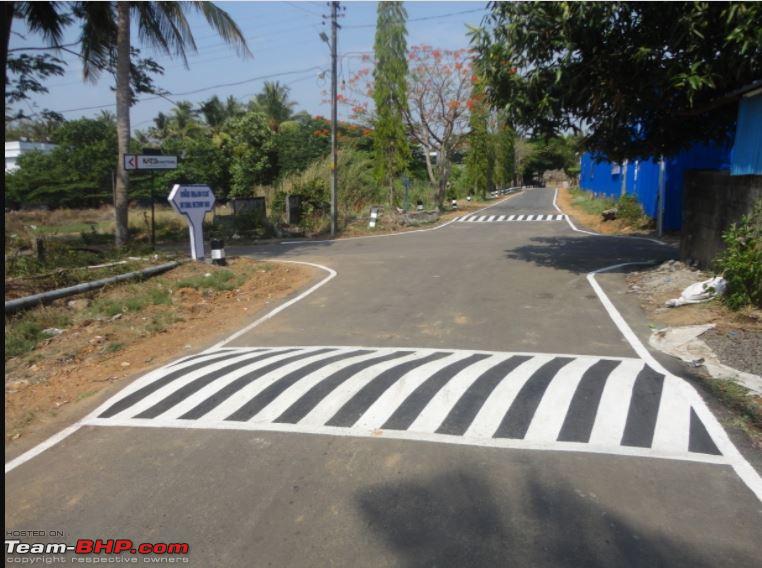Matar Singh, EOI, 4 May 2024 : Speed breakers on Indian roads have been a topic of much controversy and debate in recent years, as they pose several problems for both drivers and pedestrians alike. While speed breakers are installed with the intention of controlling vehicle speed and reducing accidents, they often end up causing more harm than good due to their design, placement, and maintenance issues. You can find small rumble type breakers , double speed bumps and even some where you will find humps of about 8 to 10 inch heights.
One of the main problems associated with speed breakers on Indian roads is that they are often poorly constructed and not properly maintained. Many speed breakers are haphazardly built using substandard materials, leading to uneven surfaces that can cause damage to vehicles and endanger the safety of drivers.
Additionally, the lack of regular maintenance and repair of speed breakers only exacerbates the problem, as they become more dangerous overtime.
Another issue with speed breakers in India is their inconsistent design and placement. Speed breakers are often installed without considering factors such as visibility, traffic flow, and road conditions, leading to confusion and uncertainty among drivers. This lack of standardization in speed breaker design and placement can increase the risk of accidents and make navigating Indian roads even more challenging for motorists. In some states you can find speed breakers on state highways and national highways.
Furthermore, speed breakers can also have a negative impact on the environment and public health. The constant braking and acceleration required to navigate speed breakers can result in increased fuel consumption and emissions, contributing to air pollution and climate change.
Additionally, the noise pollution caused by vehicles passing over speed breakers can disturb surrounding communities and have negative effects on the well-being of residents.
In addition, speed breakers in India are often used as a means of revenue generation by local authorities, leading to their indiscriminate placement and overuse.
This practice not only undermines the intended purpose of speed breakers in promoting road safety but also reflects a lack of coordination and accountability within the transportation system.
It is essential for policymakers to address this issue and ensure that speed breakers are installed and maintained in a responsible manner.
Moreover, speed breakers can also pose a threat to emergency vehicles such as ambulances and fire trucks, which require smooth and uninterrupted access to reach their destinations quickly. The presence of speed breakers on Indian roads can hinder the response time of emergency services and potentially endanger the lives of those in need of urgent medical attention or rescue.
Additionally, the proliferation of speed breakers on Indian roads can also have economic repercussions, as they can cause damage to vehicles and increase maintenance costs for drivers.
The repeated impact of vehicles passing over speed breakers can lead to wear and tear on suspension systems, tires, and other components, resulting in costly repairs and reduced vehicle lifespan.
This added financial burden can be particularly challenging for low-income individuals and contributes to the overall economic strain on society.
In conclusion, the problems related to speed breakers on Indian roads are multifaceted and require a comprehensive and coordinated approach to address.
The issues of poor construction, inconsistent design and placement, environmental impact, revenue-driven installation, obstruction of emergency services, and economic burden all underscore the urgent need for reform in the management of speed breakers. It is essential for policymakers, urban planners, and transportation authorities to work together to develop and implement sustainable solutions that prioritize road safety, efficiency, and the well-being of all road users in India.
This is my observations while travelling frequently by road from Durgapur to Tata, Purulia, Kolkata, Digha, Chandrakona Road, Bolpur, Tarapith, Dhanbad, Chittaranjan & Deoghar, nearby areas.
(View s are the author’s own.)


